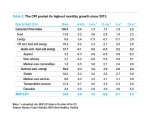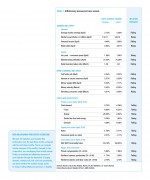Inflation
Scorecard
After strong growth in consumer prices in recent months, AIER’s Inflationary Pressures Scorecard indicates falling pressure for the months ahead, based on data through April. Out of 23 indicators tracked in the Scorecard, 10 support rising inflationary pressure, down from 14 last month, while 13 indicators support falling pressure, compared with nine last month.
Consumer demand is balanced in its influence on inflation, with two indicators pointing to rising pressure and two supporting falling pressure. On the supply front, slower growth in industrial production is putting upward pressure on inflation. But unused factory capacity and retail inventory backlogs are both curbing inflation.
Money, banking, and credit sent a clearer signal. As a result of the Fed’s policy, the federal funds rate and the interest on excess reserves rose, constraining price growth. Consequently, money supply and money velocity experienced slower growth, pointing to falling inflationary pressure.
Costs and productivity show little change from last month, supporting nearly balanced effects on inflation.
Consumer Price Index Analysis
In April, the Consumer Price Index (CPI) posted its highest monthly growth in over three years, led by a strong rebound in energy prices. The overall CPI grew 0.4 percent in April from March, which corresponds to nearly 5 percent annualized inflation. Over the past 12 months, the index has advanced only 1.1 percent.
Energy prices rose 3.4 percent in April from March, their largest monthly gain in three years. Food prices also rebounded, rising 0.2 percent after falling 0.2 percent in March.
The core CPI, which excludes volatile energy and food prices, advanced more slowly, growing 0.2 percent for the month and 2.1 percent from a year ago, both within the normal growth range in recent years.
It is worth noting that core goods, or commodities that exclude food and energy, fell 0.1 percent in April. Prices fell for apparel, household furnishings and supplies, and new vehicles. The trend of falling core goods prices is not new. Last year they declined in nine out of 12 months (eight in a row from May to December). They rebounded in January and February this year but fell again in March and April.
Prices of core services, on the other hand, continued to rise, advancing 0.3 percent in April and an annualized 3 percent from both three months ago and a year earlier. Transportation services posted the fastest monthly price increase, 0.7 percent, of all core services.
All in all, prices of services have grown continuously, while goods prices have grown much more slowly or have even dropped. Unlike goods prices, which have posted declines in several recent months, core services prices rarely decline. The most recent drop was in January 2010, and before that, in December 1982.
Everyday Price Index
AIER’s Everyday Price Index rose 0.8 percent in April from March, led by price increases for its two major components—food and gasoline. Over the past 12 months the EPI has dropped 0.8 percent. The EPI measures price changes that people encounter in everyday purchases such as groceries, gasoline, and event admissions.
The more widely known Consumer Price Index, reported by the Bureau of Labor Statistics, rose 0.5 percent in April and 1.1 percent over the past 12 months, prior to seasonal adjustments. Since the EPI is not seasonally adjusted, we compare it with the unadjusted CPI.
Food and gas prices are weighted heavily in the EPI—food accounts for about 40 percent and gas another 9 percent. In April, food prices rose 0.2 percent and gas prices jumped 9 percent.
When energy prices stabilize overall, everyday prices move higher, as we have noted in earlier reports. With the second month in a row of rising gas prices, it seems that the run of cheaper fuel has ended. Households can no longer count on savings at the pump.
https://www.aier.org/epi
Next/Previous Section:
1.Overview
2. Economy
3. Inflation
4. Policy
5. Investing
6. Pulling It All Together/Appendix


